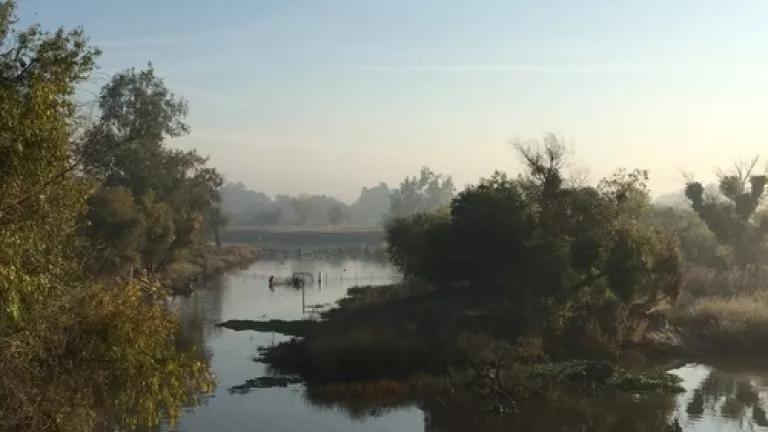
In the early morning light, a hazy fog hangs above the San Joaquin River just above where it meets with the Merced River. The river’s flow is low, and the calm surface of the water creates a striking reflection of the surrounding cottonwood and willow trees. The peace and quiet of the moment is suddenly broken by a splash in the middle of the river. It’s the sound of fall run Chinook salmon returning to the San Joaquin, bringing with them the foundation for new life and a cause for celebration.
Leaving before dawn, I made my own migration from the San Francisco Bay (except by car in a matter of hours instead of days) to witness the return of fall run Chinook salmon to the San Joaquin River and to attend this year’s SalmonFest at Lost Lake Park rear Fresno. At this first stop, I joined fish biologists with the San Joaquin River Restoration Program who are capturing returning adults and moving them upstream around a stretch of the river that is dry, in part due to the extreme drought this year.
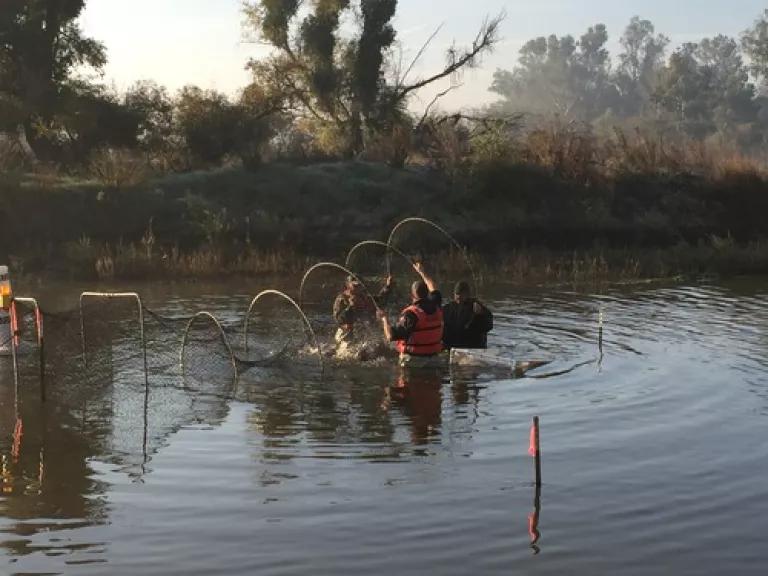
These fish are part of the first generations of fall and spring run Chinook salmon that are returning to the San Joaquin River after nearly sixty years. Chinook salmon (also known as King salmon) are among the largest of their kind, and they historically migrated to the San Joaquin by the hundreds of thousands. This year folks will be happy if we see something close to the 360 adults caught last year given the impact of drought on river conditions throughout the Central Valley. But while these fish may be few in number, they are a vital part of restoring the health of the San Joaquin River.
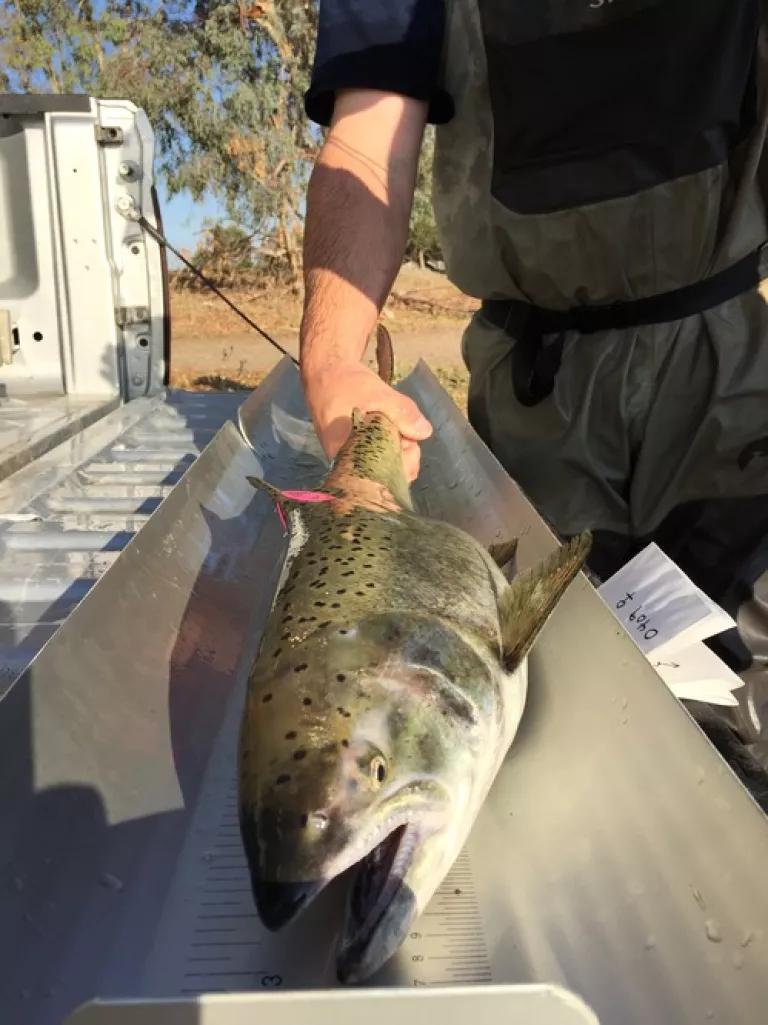
Salmon return to their natal streams to reproduce and then die. In this final act, adults create another generation of fish and also leave behind an abundance of nutrients that replenish riverine ecosystems. Salmon do most of their growing in the ocean, and serve as one of the few connections between nutrient-rich seas and nutrient-poor upper watersheds.
The importance of salmon to the health of river ecosystems cannot be overstated, but they also provide many benefits to humans as well. Salmon have always been an important source of food as well as jobs in California and the benefits of restored salmon runs in the San Joaquin will extend much farther than the banks of the river. Reviving a healthy river will improve quality of life in the San Joaquin Valley by providing new opportunities for fishing and recreation, and boosting the local tourism and travel industries, all while creating and estimated 11,000 local jobs.
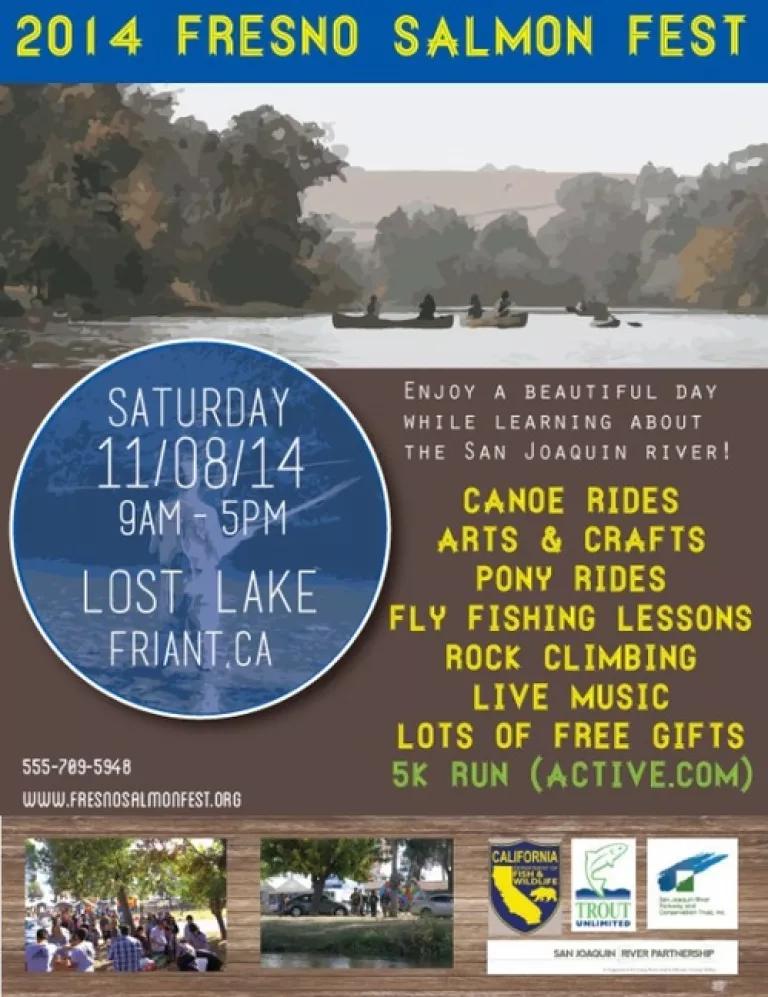
The Fresno SalmonFest was created to inform people from local communities about the effort to bring back salmon to their local river and the opportunities a restored river will provide. The second annual event, held at Lost Lake Park, was fun for kids and adults alike. There were canoe trips to explore the river, a fish tank to see Chinook salmon up close, arts and crafts for kids, live music and food. Unsurprisingly, smiles and laughter were in no short supply at the SalmonFest, a testament to the power of a river to bring a community together.
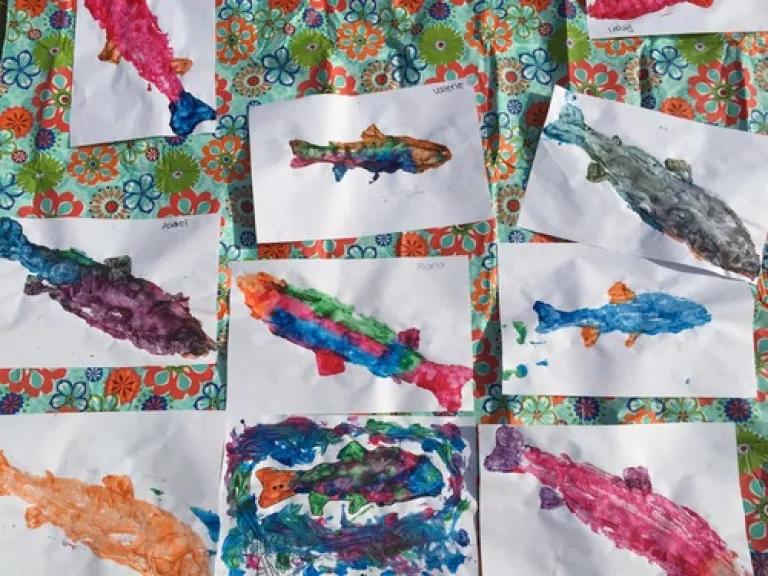

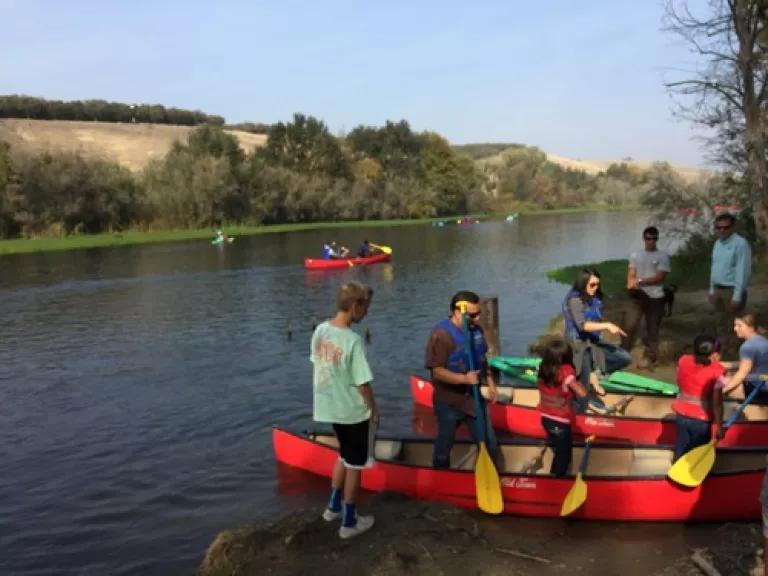
Healthy rivers are essential for healthy communities. Not only do they provide water for our farms and cities, but they give us a place to gather, play, and enjoy food in the company of our neighbors. Last summer, CNN reporter John Sutter captured the importance of the San Joaquin to people in the region when he wrote about his source-to-sea journey down 300 miles of the river. After talking with dozens of people along the way, he concluded that while restoration of the river poses many challenges, it is too important not to succeed. The return of salmon to the San Joaquin River is a critical step toward restoring a vibrant river and is certainly a cause for celebration.
